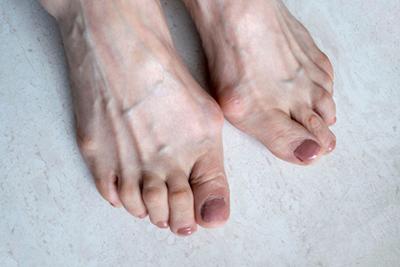Blog
What Are Bunions? Causes, Symptoms, and Effective Treatments
- updated: Sep. 20, 2024
Bunions are bony bumps that occur at the base joint of the big toe. They usually grow slowly, but that doesn’t mean their development does not cause pain—especially when wearing Read More
Get Professional Care for a Broken Foot or Ankle
- updated: Oct. 31, 2023
Constant care and regular evaluation are important for a foot or ankle fracture. If left untreated, foot or ankle fractures can worsen over time and create more serious problems. Don't wait Read More
Different Types of Podiatry Equipment
- updated: Dec. 08, 2023
Podiatrists, also known as DPMs, are particular kinds of doctors that specialize in treating conditions of the feet. These medical professionals must undergo a rigorous course of study before being Read More
Heel Pain Location May Provide Clues to Its Cause
- updated: Dec. 08, 2023
Heel pain is a very common occurrence. It is usually felt under the heel or at the back of the heel. When pain and inflammation is located on the bottom Read More
Development of Baby's Feet
- updated: Dec. 08, 2023
Babies’ feet may look like miniature versions of adult feet, but that is only true on the outside. Early development enables the baby to find various ways to move their Read More
Proper Shoes Can Prevent Foot Pain When Cycling
- updated: Dec. 08, 2023
Studies show that a large majority of cyclists experience foot pain. While cycling, a great deal of force is generated through the legs, to the feet, and onto the pedals. This Read More
We Can Treat Your Foot or Ankle Pain
- updated: Oct. 31, 2023
Foot or ankle pain can negatively affect your day-to-day life and can occur due to several different conditions. Pain can also be an indicator of a more serious underlying condition, Read More
Foot Scrubbers for the Elderly
- updated: Dec. 08, 2023
Caring for a senior, whether you are a professional caretaker or a loved one, can be challenging for many different reasons. One reason is that maintaining the health of a senior’s Read More
What Is in a Wound Kit?
- updated: Dec. 08, 2023
Some individuals, such as people who are diabetic, may be particularly susceptible to developing wounds on their feet. Therefore, these individuals may benefit from always having some kind of professional Read More
Alcohol and Foot Care
- updated: Dec. 08, 2023
Although many people may have a casual interest in practicing daily foot care, the world of podiatry is expansive and many important pieces of information can help one improve their foot Read More
Strong Feet May Help the Overall Body
- updated: Oct. 31, 2023
The overall health of the body may improve when the feet feel good. This can be accomplished by performing specific foot stretches that may help foot strength and flexibility. Research has Read More
Pedicures at Home
- updated: Oct. 31, 2023
Caring for one’s feet is an important part of one’s daily health routine. However, taking care of your feet doesn’t have to be a boring chore–it can be fun! One Read More
Heel Pain Can Be Treated!
- updated: Oct. 31, 2023
Do you suffer from heel pain when you get up in the morning? If so, you should seek the professional help of your podiatrist and have a proper diagnosis performed. Read More
What Is Fat Pad Atrophy?
- updated: Dec. 08, 2023
A variety of different foot conditions can potentially become more likely as an individual ages and advances through their later years in life. One of these conditions that every senior Read More
Painful Symptoms Are Often Associated With Morton’s Neuroma
- updated: Oct. 31, 2023
Morton’s neuroma is a foot condition that affects the nerves between the metatarsal bones in the foot. These are long bones, and there are affected nerves lying in between the Read More
Painful Gout and Possible Prevention Techniques
- updated: Oct. 31, 2023
There is a type of inflammatory arthritis that is known as gout. It generally causes severe pain and discomfort, and affects the big toe. High levels of uric acid are responsible Read More
Our Business Hours
McAllen Office
Monday
8:00 am - 5:00 pm
Tuesday
8:00 am - 5:00 pm
Wednesday
8:00 am - 5:00 pm
Thursday
8:00 am - 5:00 pm
Friday
8:00 am - 5:00 pm
Saturday
Closed
Sunday
Closed
Weslaco Office
Monday
8:00 am - 5:00 pm
Tuesday
8:00 am - 5:00 pm
Wednesday
8:00 am - 3:00 pm
Thursday
8:00 am - 5:00 pm
Friday
Closed
Saturday
Closed
Sunday
Closed


